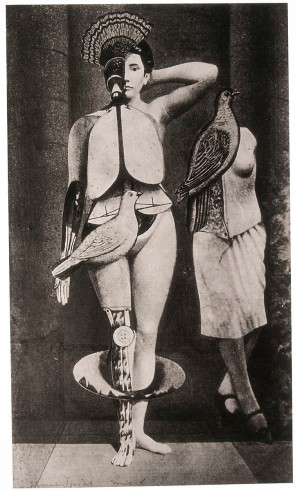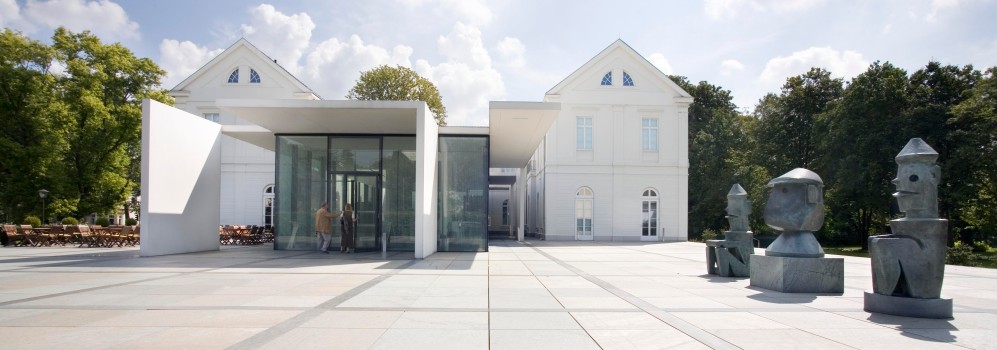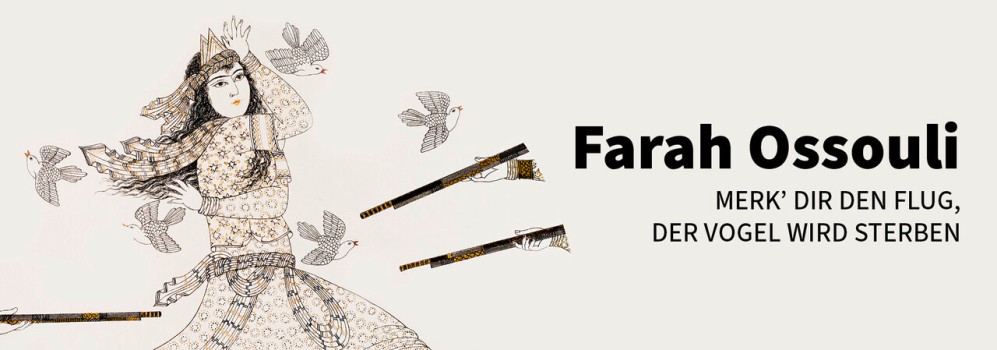Max Ernst and his experimental Art Techniques
Not only the subjects and motifs of his artworks are evidence of Max Ernst's rich creativity: in his constant search for new ways of expressing his surrealist paintings, the artist experimented with various techniques and steadily developed them further.

Max Ernst, Sacra Conversazione, 1921, Photography of a collage, 22,5 x 13,5 cm, Collection Becker, © VG Bild-Kunst, Bonn 2024
Collage
Max Ernst was known for his mysterious and poetic collages. To create them, he used various illustrations he found in warehouse catalogues, novels or textbooks. After cutting them out he combined them with other image fragments on paper and secured them with glue. Using the principle of collage, he mainly combined pictorial elements that did not fit together logically. From the early 1920s, Max Ernst processed his traumatic war experiences in the form of collages that show technoid bodies.

Max Ernst, Blitze unter Vierzehn Jahren, Histoire Naturelle, 1926, Collotype after frottages, second edition from 1972, Max Ernst Museum Brühl des LVR, © VG Bild-Kunst, Bonn 2024
Frottage
The starting point for Max Ernst's frottages were a variety of objects, whose structures he rubbed through with a pencil on paper. For his first frottages in 1925, Max Ernst used the surface of an old and worn wooden floor. Later he used the structure of natural materials such as leaves, grids and seashells. With his frottages the artist wanted to integrate conincidences into his creative process.
Grattage
In his search for new technical methods, Max Ernst developed the technique of grattage. In this technique, a canvas is painted with many layers of colour. Then it is laid over a thick piece of fabric or other objects. Afterwards, the paint is scraped off again, revealing a pattern of the objects placed underneath.

Max Ernst, D 1943, 1943, oil on wood, Max Ernst Museum Brühl of the LVR, Kreissparkasse Köln, © VG Bild-Kunst, Bonn 2024
Decalcomania
The artistic process of Decalcomania is characterised by coincidence. Ernst applied a thin layer of liquid paint to the canvas, onto which he then pressed a sheet of glass or paper. The resulting shifts in colour and the bubbles and branchings created by the movement were not predictable. Max Ernst then worked the resulting tangled structures into vivid landscapes and fantastic creatures using a paintbrush.

Max Ernst, Dream Rose, 1959, bronze, Max Ernst Museum Brühl of the LVR, Kreissparkasse Köln, © VG Bild-Kunst, Bonn 2024
Sculptural approach
Most of Max Ernst's sculptures are so-called assemblages. The artist used forms found in nature and everyday objects, which he stacked, mirrored and rearranged. The artist used egg cartons, flower pots and shells, among other things, as initial moulds. From the moulded objects, surreal creatures emerge that blend human and animal features.

Max Ernst, Jeune homme intrigué par le vol d'une mouche non-euclidienne, 1942-47, oil and lacquer on canvas, Collection Ulla and Heiner Pietzsch, Berlin, © VG Bild-Kunst, Bonn 2024, Photo: Staatliche Museen zu Berlin, Nationalgalerie / Jochen Littkemann
Oscillation
Oscillation is an indirect method of applying paint to a medium. Colour drips onto the canvas from a can with a hole in it, which is attached to a string. Depending on the strength of the pendulum's swing, this creates a radial or dripping pattern on the canvas. Max Ernst developed this technique during his time in the USA. Jackson Pollock, with whom Max Ernst was in contact during this time, adopted this technique and turned it into his iconic Drip Paintings or Action Paintings.




 Weiter
Weiter Zurück
Zurück Pause
Pause Start
Start